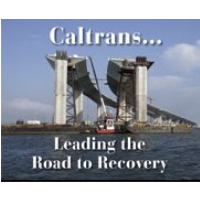“Out-of-Date” Caltrans and Its Culture of “Fear” Gets Another Bad Review

An independent review (pdf) of the California Department of Transportation (Caltrans), ordered last year by the governor, found a “culture of risk aversion and even fear,” an “out-of-date” highway department that should be a “mobility department” and an agency “out of step with best practice in the transportation field.”
It recommended what the Associated Press described as a “sweeping overhaul,” and was greeted enthusiastically by Caltrans Director Malcolm Dougherty, who said the report’s suggestions dovetailed nicely with the “reforms already underway. So we can hit the ground running.”
The report, from State Smart Transportation Initiative (SSTI), acknowledged the steps taken by the department and said it wasn’t nearly enough. The department was incapable of fixing itself and would have to be reworked by the Legislature, other agencies, stakeholders and its parent, the California State Transportation Agency (CalSTA).
Daugherty’s boss, CalSTA Secretary Brian Kelly, said he believed there was a “collective hunger among the department staff to modernize.”
That hunger and the desire for reform were stimulated in May after the department, which has 19,500 employees and a $12.7 billion budget, was roasted at legislative hearings inspired by a series of serious problems building the new San Francisco-Oakland Bay Bridge. The bridge finally opened last Labor Day, years late and billions over budget.
But state Senate Transportation Commission Chairman Mark DeSaulnier (D-Concord) told AP there was more to it, including a bit of a turf war and issues of respect. “The bridge is a symbol of the larger problems. And if you look at Caltrans and its management of the bridge, it's symptomatic of a lot of projects. They're insular. They're not responsive to the public. They need to be more open and realize who they work for.”
That lack of cuddliness between the executive and legislative branches was alluded to in the report, which noted fundamental state policy changes in the ‘70s and ‘80s that enhanced local entities. The lawmakers gave Caltrans “growing responsibility for operations and maintenance but lessened power and capacity.”
When it came to “critical policy issues that would logically involve Caltrans, such as creating a high-speed rail network and reducing climate effects, the legislature has worked around the department.” In other words, it’s not the department’s fault.
“In sum, it is not clear the legislature and the executive have helped Caltrans to adapt to change in a positive way, but rather have directed resources and mandates for change to other stakeholders.”
The report noted that Caltrans has long recognized that its role must evolve from that of designer and builder of an epic highway system, but “despite declarations going back at least 40 years, still has not accepted, adjusted to, or made anywhere near the possible best public-serving of this new reality.”
Caltrans is not alone in that insight: “Similar findings have been reached in previous department assessments, from both within and without California government.”
The study cost $287,000. SSTI is housed at the University of Wisconsin, Madison, and participants include the departments of transportation in 19 states.
–Ken Broder
To Learn More:
Independent Review Calls Caltrans “Out Of Date” and Cites “Culture of Fear” (by Charles Piller, Sacramento Bee)
Caltrans to be Subject of Independent Review (by Judy Lin, Associated Press)
Report: Calif. Highway Dept. Needs “Modernizing” (Associated Press)
The California Department of Transportation: SSTI Assessment and Recommendations (State Smart Transportation Initiative) (pdf)
- Top Stories
- Controversies
- Where is the Money Going?
- California and the Nation
- Appointments and Resignations
- Unusual News
- Latest News
- California Forbids U.S. Immigration Agents from Pretending to be Police
- California Lawmakers Urged to Strip “Self-Dealing” Tax Board of Its Duties
- Big Oil’s Grip on California
- Santa Cruz Police See Homeland Security Betrayal in Use of Gang Roundup as Cover for Immigration Raid
- Oil Companies Face Deadline to Stop Polluting California Groundwater





